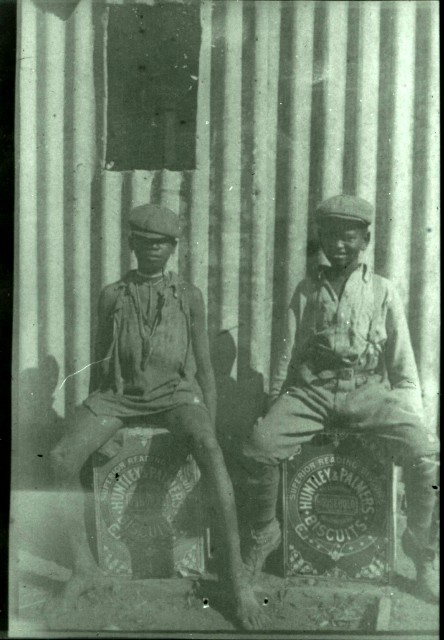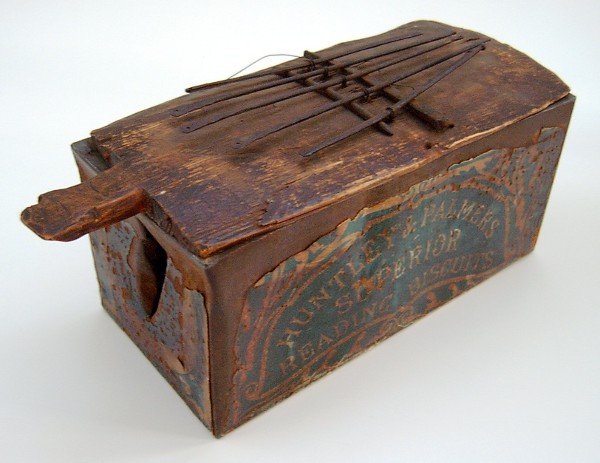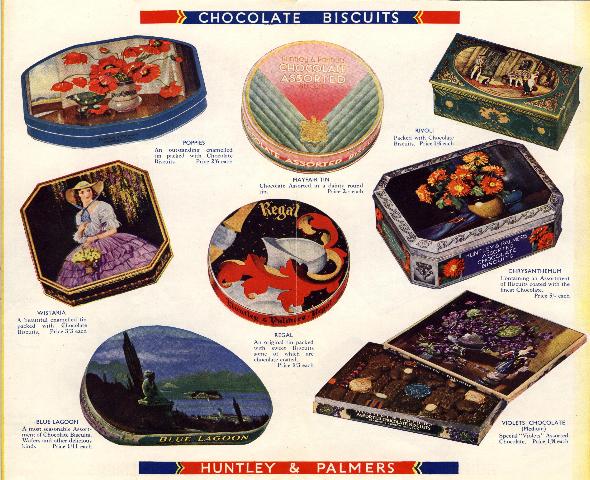In the days when biscuit tins were well-made and sturdy objects, their reuse as practical items was common. In particular, Huntley & Palmers' square 5lb and 10lb tins could be used as storage for virtually any sort of cargo. In Uganda, native bibles and prayer books had to measure three inches broad by three inches thick so as to fit into two-pound tins, which were about the only containers that would protect them against the ravages of white ants. And when the English Prince Henry died in Sierra Leone on 20 January 1896, he was brought home in a rum-filled tank made out of biscuit tins.

Two South African boys sit on two large tins of Huntley & Palmers Household and Osborne biscuits, in about 1903. (REDMG : 1997.130.620)
The Battle of Omdurman, 1898
By the late 1890s the importance of the Sudan had become clear to the British to ensure their continued colonial control over Egypt. On 2 September 1898 the battle of Omdurman was a decisive defeat of the followers of Mohammed Ahmad (1843-1885), who believed that he was the ‘Mahdi’ (Messiah). After the battle, some captured Mahdist Sudanese swords were found to have scabbards with metal bands cut from Huntley & Palmers biscuit tins, with the firm’s name (stamped originally on the base of each tin) prominently displayed. 18 years of war resulted in British colonial control of Sudan.

Winston Churchill was present at the battle, riding with the 21st Lancers. Thousands of Mahdists were killed, while less than a hundred of the British forces (mainly Sudanese and Egyptian soldiers) died.(REDMG : 1997.84.2)
Name that tune
In Africa, biscuit tins were turned into musical instruments that are known by different names in various parts of Africa including mbira, kalimba, and sanza. Europeans call them thumb pianos or lamellaphones.
The sanza below is an early twentieth century instrument, made from a Huntley & Palmers biscuit tin that forms the sound box. In his 1899 novella The Heart of Darkness, Joseph Conrad used the image of an empty Huntley & Palmers tin as a symbol of the oppression, exploitation, and destruction caused by European colonial powers in Africa.

A Huntley & Palmers biscuit tin reused as the sound box of an African thumb piano or sanza (REDMG : 1997.162.17)
Tin designs
The designs on the tins also influenced decorative items all over the globe. In Marian Wenzal's book 'House Decoration in Nubia', she describes the evolution of house decorations in northern Sudanese Nubia.
Discussing Hasan Arabi's major decorative work between 1941 and 1946 she writes:
'The only Art Deco manifestations it showed were Zig Zag patterns imposed on angular, irregular shapes and rigid, rainbow coloured bands forming large chevrons. Such chevrons appeared on a Huntley & Palmers biscuit tin called the "Mayfair" and on advertisements for a kind of ginger nut biscuit called Johnny Ginger.'

In the centre of the top row is the Mayfair tin, featuring the distinctive blue chevrons that influenced some mid-century Sudanese design ideas. (REDMG : 1994.21.71)
In the next section, read more about Huntley & Palmers' imports and exports.





